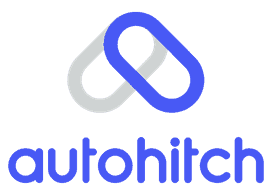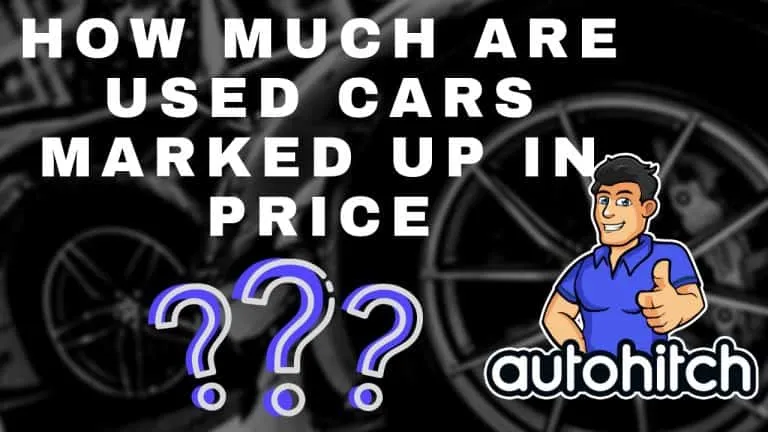How Much Do Dealers Markup Used Cars
When it comes to just how much a Car Dealer will markup a Used Car, the short answer is: Around 10% to 30%, or anywhere from $1,500 to $3,500 for your “Average” used car.
Check out this Dealership Markup Tracker.
By average I am referring to any car priced between $10,000 to $30,000.
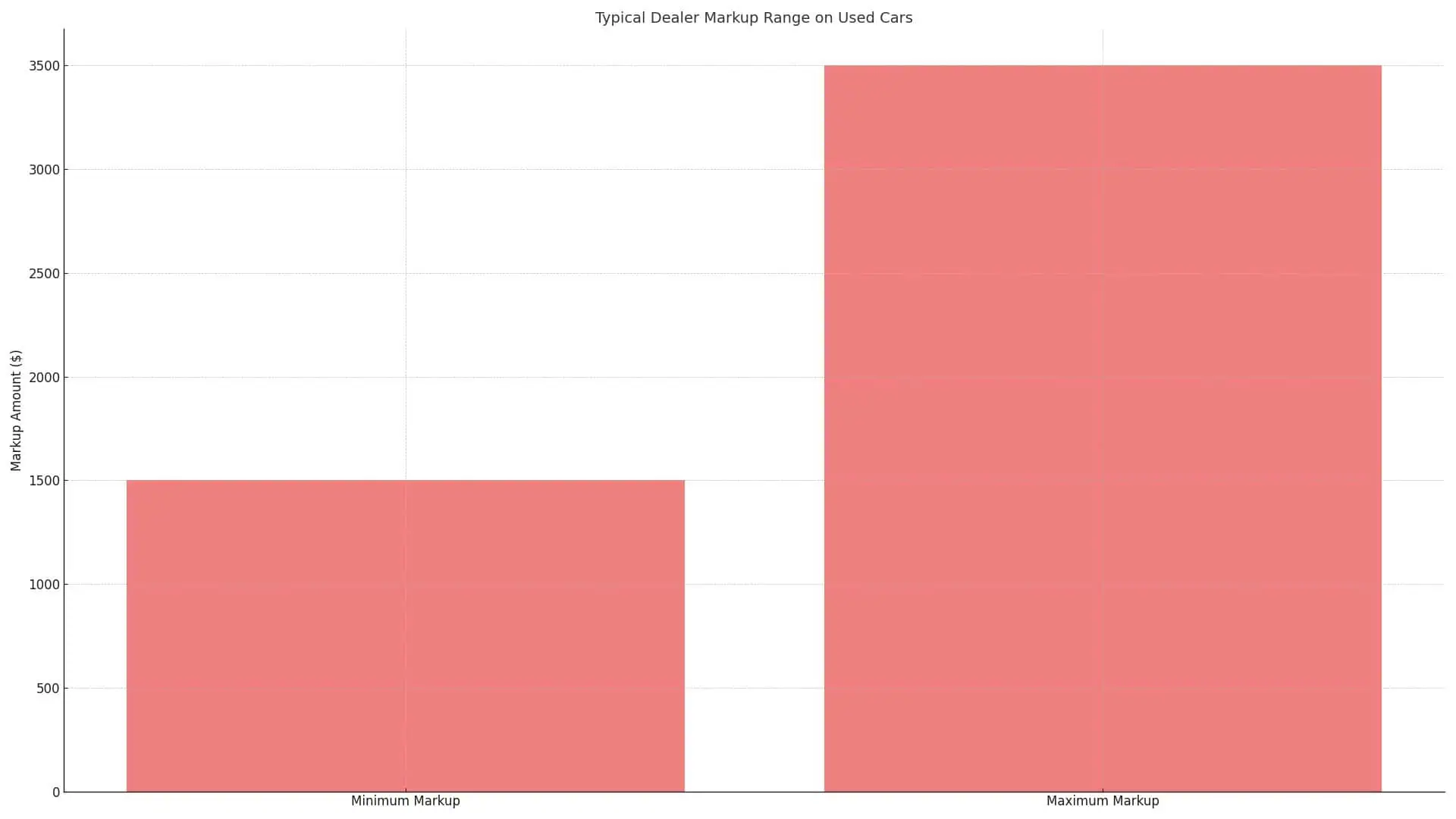
The long answer is that Used Cars don’t exactly have an MSRP, so assuming to know (For Sure) exactly what a dealer paid for a car vs the markup vs profit margin is somewhat difficult, but I can get you close (Read Below).
Relevant Articles to Read:
- How Much Will Dealers Come Down on a Used Car?
- How Much Do Dealerships Make on New Cars
- How To Negotiate Used Car Price
Table of Contents
How Much Do Dealerships Make On Used Cars?
I think the best way to understand how much dealerships make on used cars is to identify what they are making at this very moment.
I will say this: Profitability for used car dealerships has been anything but static.
Below is a helpful table that lists some of the biggest dealerships in the U.S., their gross profit per vehicle, and the percentage of change (Increase or Drop).
Table: Gross Profit Per Used Vehicle in Q1 2023
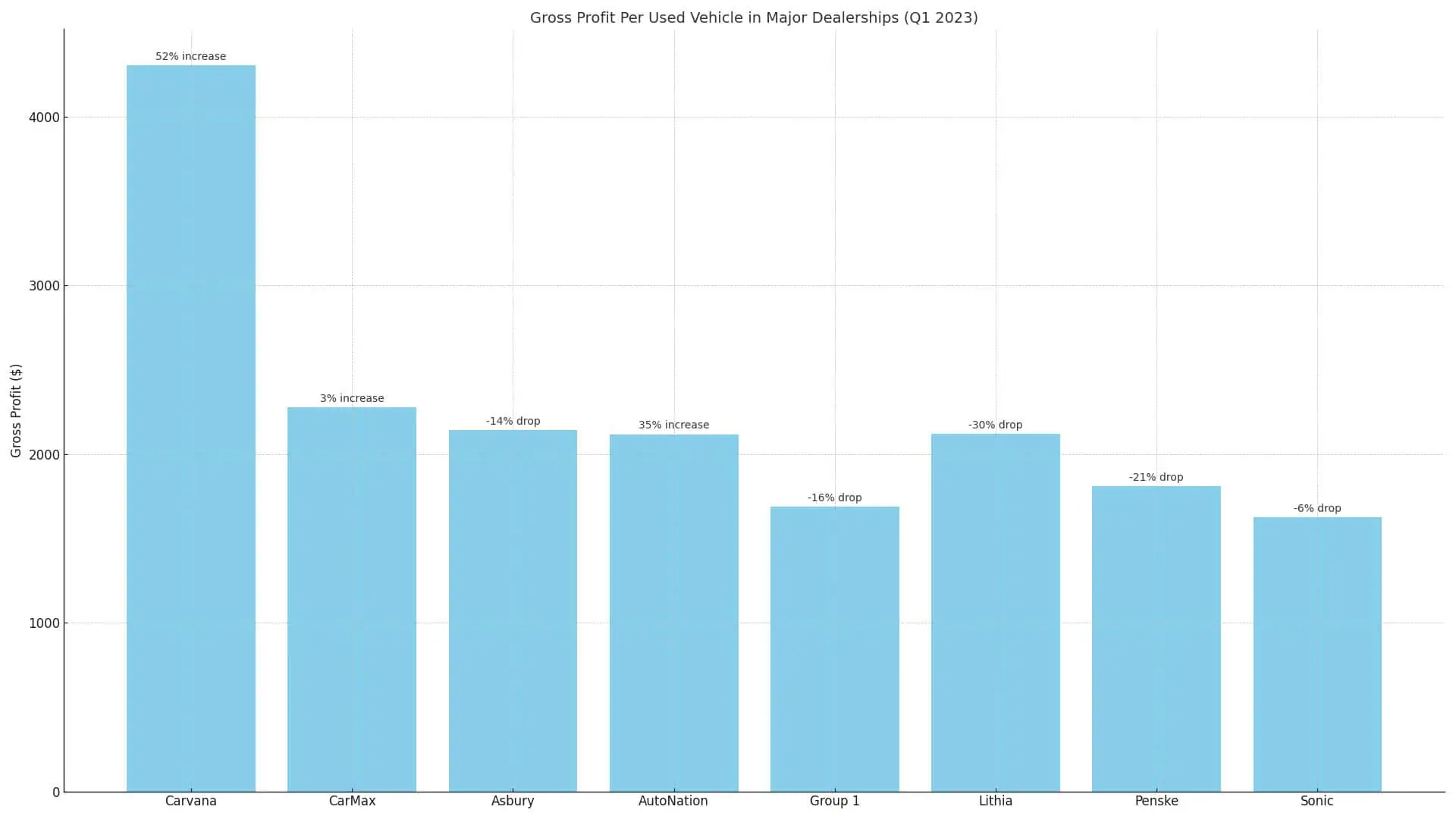
| Dealership | Gross Profit | Percentage Change |
|---|---|---|
| Carvana | $4,303 | 52% increase |
| CarMax | $2,277 | 3% increase |
| Asbury | $2,141 | 14% drop |
| AutoNation | $2,117 | 35% increase |
| Group 1 | $1,689 | 16% drop |
| Lithia | $2,120 | 30% drop |
| Penske | $1,808 | 21% drop |
| Sonic | $1,626 | 6% drop |
As we continue to discuss this topic, and before you begin negotiations with dealers, it’s important to understand the difference between dealer markup and what the dealer stands to earn in profit.
Let me explain dealer profit vs markup:
The Lemonade Stand Analogy:

Imagine you’re running a lemonade stand. You buy a jug of lemonade for $5. Simple, right? You’d think selling it for $6 means a $1 profit. But wait!
You also spent:
- $2 on cups
- $1 on sugar
- $1 on a lemon for garnish
- $1 on ice
So, your total cost is actually $10. If you sell the lemonade jug for $5, you’re not breaking even; you’re losing $5.
Similarly, when a car dealer buys a used car for $10,000, that’s just the start. They also spend on:
- Inspection
- Repairs
- Cleaning
- Sales staff wages
- Overhead costs (rent, utilities, etc.)
So, when you see a $12,000 price tag, it’s not pure profit. Just like your lemonade stand, the dealer has costs built into that markup. Selling the car for $10,000 would mean a loss, not a break-even.
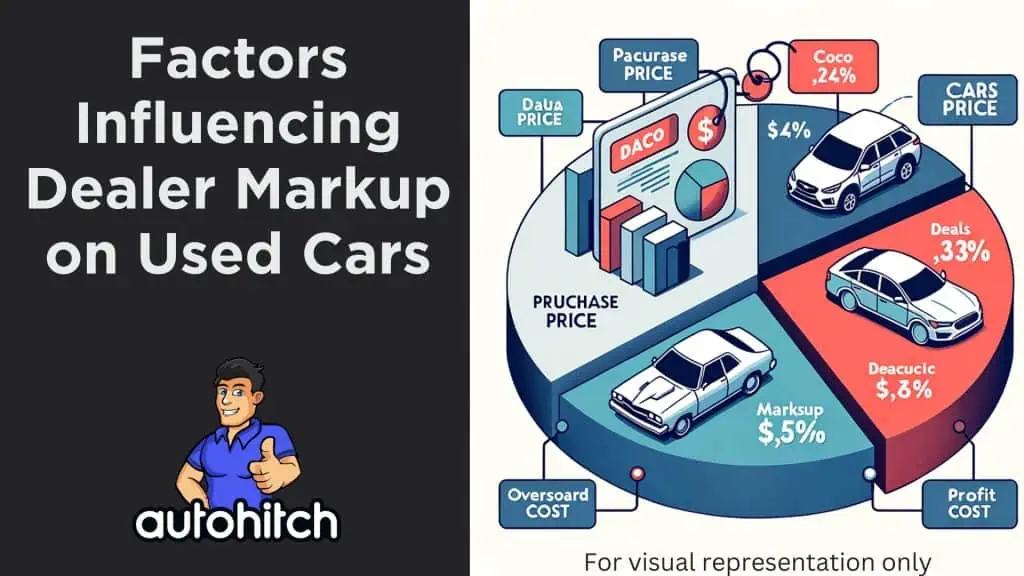
Factors Influencing Dealer Markup on Used Cars
Here’s a simple table outlining the various factors that go into the dealer margins of a used car at a dealership:
| Factor | Description |
|---|---|
| Purchase Price | The initial cost the dealer paid to acquire the used car. |
| Inspection Costs | Fees for thorough mechanical and safety inspections. |
| Repair & Refurbishment | Costs for fixing issues, replacing parts, and general refurbishment to make the car sale-ready. |
| Cleaning & Detailing | Professional cleaning, both interior and exterior, to make the car look like new. |
| Warranty | If the dealer offers a warranty, this is a cost they need to cover. |
| Sales Commission | Wages or commissions for the sales staff who sell the car. |
| Overhead Costs | Rent, utilities, insurance, and other operational costs. |
| Marketing & Advertising | Costs to list the car online, print ads, or any other form of advertising. |
| Transportation | If the car was shipped from another location, those costs are included. |
| Taxes & Licensing | Costs for any necessary permits, licenses, and taxes. |
| Profit Margin | The amount the dealer aims to earn as profit, usually a percentage of the selling price. |
The Role of Overhead Costs in Markup
- Transportation Costs: Dealers often factor in the cost of transporting the vehicle to their lot.
- Staff Salaries: A portion of the margin goes towards paying the staff involved in sales and maintenance.
- Facility Costs: Rent and utilities also play a role in determining the markup.Table: Common Overhead Costs
How Market Demand Affects Markup
- Popular Models: Cars that are in high demand often have a higher profit margin.
- Seasonal Trends: Convertibles may have higher markups in summer, while SUVs may see increases in winter.
- Unique Perspective: Did you know that electric cars are seeing a surge in markup due to increased demand for sustainable options?
The Impact of Vehicle Condition on Price
- Mileage: Lower mileage often results in a higher prices.
- Cosmetic Condition: Cars in better cosmetic shape command a higher price.
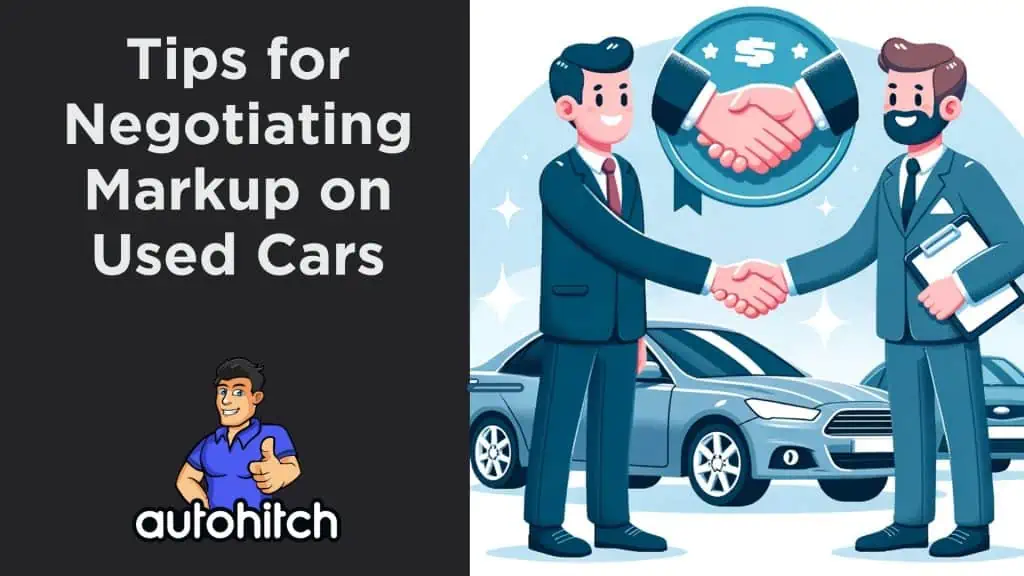
How To Negotiate Dealer Markup
Understanding the Dealer’s Perspective
- Profit Margins: Dealers have a minimum profit margin below which they won’t go. Understanding this can help you gauge how much room there is for negotiation.
- Inventory Turnover: Dealers are more willing to negotiate if they need to clear out inventory. The longer a car sits on the lot, the more it costs the dealer.
- Market Trends: Dealers keep an eye on market demand and may be less willing to negotiate for cars that are currently popular.
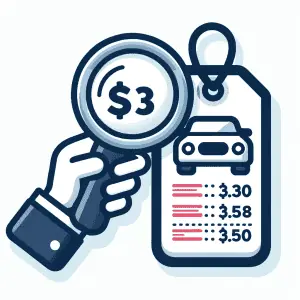
Key Strategies for Effective Negotiation
- Initial Offer: Start by offering 15-25% less than the asking price. This gives you room to negotiate upwards.
- Counteroffers: Be prepared to make and receive counteroffers. Always have a maximum price in mind and stick to it.
- Research: Use resources like Kelley Blue Book to know the fair market value of the car. This strengthens your negotiating position.
| Strategy | Description |
|---|---|
| Initial Offer | Start 15-25% below the asking price |
| Counteroffers | Be prepared for back-and-forth negotiation |
| Research | Use fair market value as a reference point |
Current Trends in Used Car Markup
The Impact of Supply Chain and Microchip Shortages
- Price Fluctuations: The average used car price has seen a 4.1% drop compared to the previous year due to supply chain disruptions and microchip shortages.
- Limited Supply: Factory closures and end-of-lease buyouts are expected to result in 8 million fewer used cars in the market for the next few years.
- Unique Perspective: Despite the average price drop, don’t expect sustained decreases. The supply chain issues are creating a volatile market where prices can swing unpredictably.
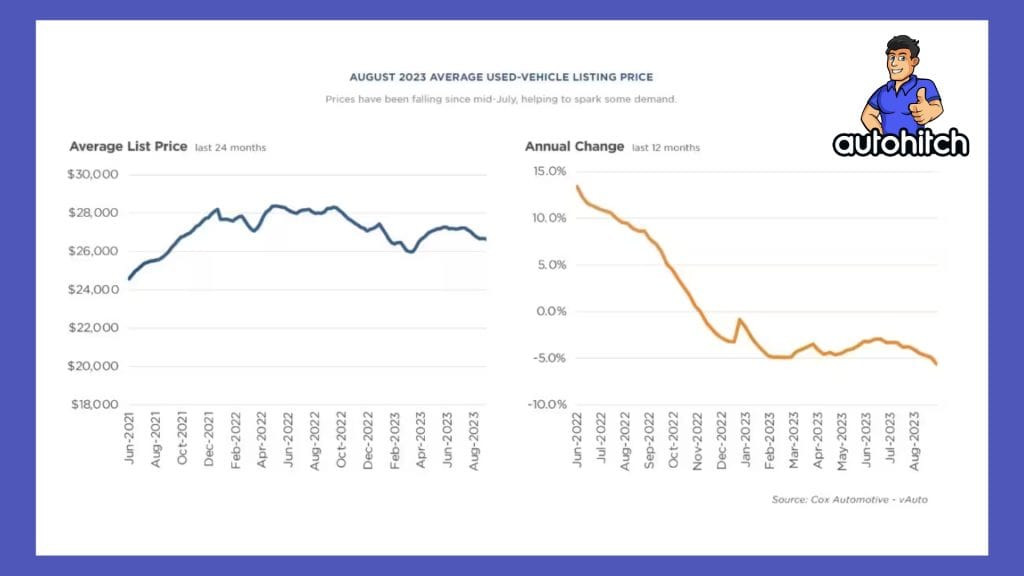
The Rise of Algorithmic and Data-Driven Pricing
- Sophisticated Software: Dealerships increasingly use software to set prices based on real-time market conditions.
- Inventory Turnover: Dealerships operate on a 60 to 90-day policy for used cars, adjusting prices downward every 10 days to accelerate sales.

Table: Algorithmic Pricing Factors
| Factor | Description |
|---|---|
| Market Demand | Real-time data on car popularity |
| Seasonal Trends | Adjustments based on time of year and location |
| Inventory Age | Price adjustments based on how long a car has been on the lot |
Seasonal and Geographic Variations
- In-Demand Vehicles: Despite average prices going down, prices on in-demand vehicles remain.
- Accessories: Dealerships mark up the price of vehicle accessories by 40 to 50% over what they paid.
- Unique Perspective: Seasonal and geographic factors can significantly influence a car’s markup. For instance, a truck in winter in Colorado could be priced much higher than the same model in summer in California.
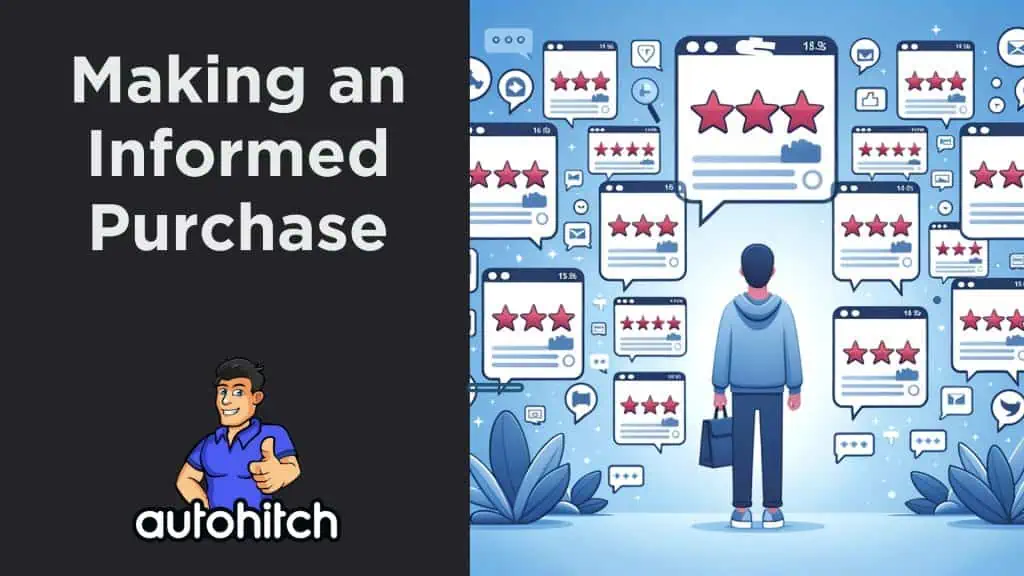
Making an Informed Purchase
Tools and Resources for Buyers
- Price Comparison Websites: Utilize platforms like Kelley Blue Book and Edmunds to get an idea of a car’s fair market value. But don’t stop there! Browse sites like Cargurus, Facebook Marketplace, and Autotrader to get a good idea of what both private sellers and dealers are advertising your car for.
- Dealer Reviews: Check out reviews of dealerships to gauge their reputation and customer satisfaction levels.
- Financing Calculators: Use online calculators to understand the financial implications of your purchase, including interest rates and monthly payments.
- Unique Perspective Idea: Consider using machine learning-based tools like AI that predict a car’s future value based on current trends. This can help you make a more informed decision and possibly save money in the long run.
| Tool Type | Recommended Platforms |
|---|---|
| Price Comparison | Kelley Blue Book, Edmunds, Cargurus, Facebook Marketplace, Autotrader |
| Dealer Reviews | Google Reviews, Yelp |
| Financing Calculators | Bankrate, Auto Loan Calculator |
The Importance of Vehicle History Reports
- Accident History: Knowing if the car has been in any accidents can significantly affect its value, whether you’re selling or buying, and the overall safety of the vehicle.
- Ownership History: Multiple owners in a short period could be a red flag.
- Service Records: Regular maintenance is a good indicator of a well-kept vehicle.
How to Avoid Dealer Markups
Based on research from car buying experts, here are some key strategies to avoid paying dealer markups when purchasing a vehicle:
- Shop Around Extensively: Contact multiple dealers to find those willing to sell cars at MSRP without unnecessary prices increases or add-ons. Be open to traveling further distances or waiting for factory orders if needed to secure a fair deal.
- Focus on Out-the-Door Pricing: When negotiating, make sure you get clear quotes that include all taxes, fees and additional charges factored in. This reveals the real total price you’ll pay.
- Negotiate Markups: If faced with an undeserved markup on a desired vehicle, try negotiating it down by referencing competing offers or budget limitations. Reducing markups by 50% or more is quite possible.
- Avoid Dealer Add-Ons: Only opt for accessories or services you truly want or need. Reject things like fabric protection and VIN etching that only serve to drive up costs and dealer profit.
- Use Online Buying Services: Websites like Carvana allow you to bypass negotiations and markups, though inventory may be more limited.
- Factory Order Vehicles: Putting in a factory order, though you’ll wait potentially months for delivery, can help secure a car at its base MSRP sticker price. Get all orders in writing first.
With tenacity, creativity and leveraging all available negotiation tools, you can minimize the extra costs dealers try to extract via markups and come away with the fairest price.
Conclusion and Next Steps
Summary of Key Takeaways
- Markup Factors: Understand that dealer markup is influenced by overhead costs, market demand, and vehicle condition, which all impact used car dealer profit margin.
- Negotiation: Be prepared with research and a strategy to negotiate effectively.
- Current Trends: Keep an eye on market trends, especially the impact of supply chain disruptions and data-driven pricing.
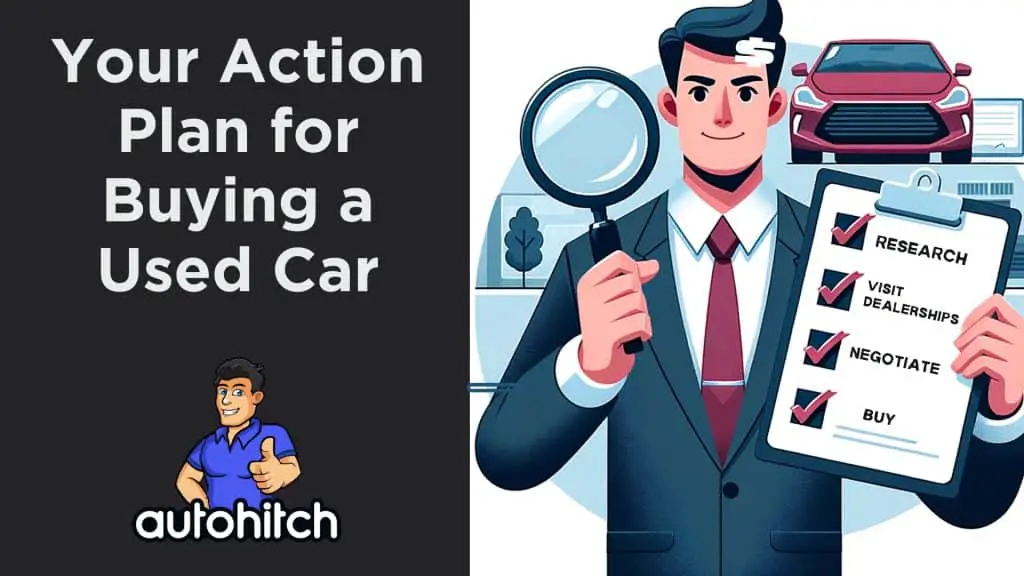
Your Action Plan for Buying a Used Car
- Research: Use the recommended tools to gather all necessary information.
- Visit Dealerships: Don’t just rely on online data; visit multiple dealerships to get a feel for the market.
- Negotiate: Use your research and understanding of dealer psychology to negotiate a fair price.
Unique Strategy Idea: Consider timing your purchase to coincide with dealership inventory cycles. If you know a dealer adjusts prices every 10 days, visiting on the 9th or 10th day could give you a negotiation advantage.
By following this action plan and keeping abreast of current trends, you’ll be well-equipped to make an informed purchase of a used car.
Find Out What The Dealer Markup is on Your Car:
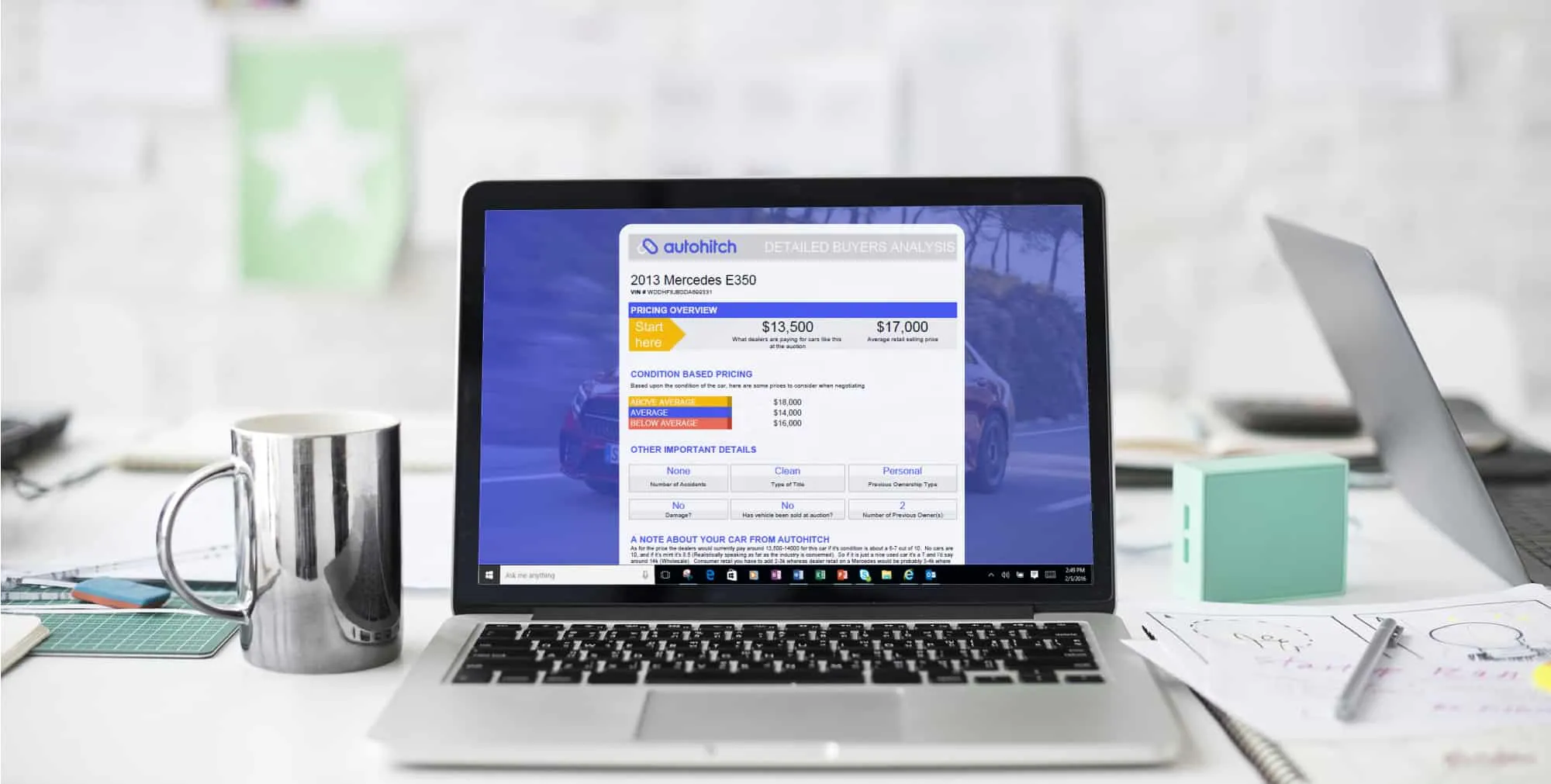
Want to know the true value of your car from a dealer’s perspective?
Autohitch offers a Car Shopping Service for just $20. Our service will give you current auction data for cars like yours.
And,
By understanding the current dealer buying and selling prices, you’ll be one step ahead in negotiations. Don’t miss out on getting the best deal—discover what your car is really worth with Autohitch today!
Citations
- Is Now the Time to Buy, Sell, or Trade in a Used Car?
- Understanding Used Car Prices
- Automotive Dealerships Markups
- Definition: Markup on Used Cars
- Buyer Beware: Dealer Markups
- How Much Do Dealers Markup Used Cars
- When to Buy a Used Car
- Study: Dealer Markups Contributed to Recent Inflation
- What is Markup on a Used Car?
- Reddit Discussion: Dealer Markups Are Bullsh*t
- Used Car Price Trends for 2023
